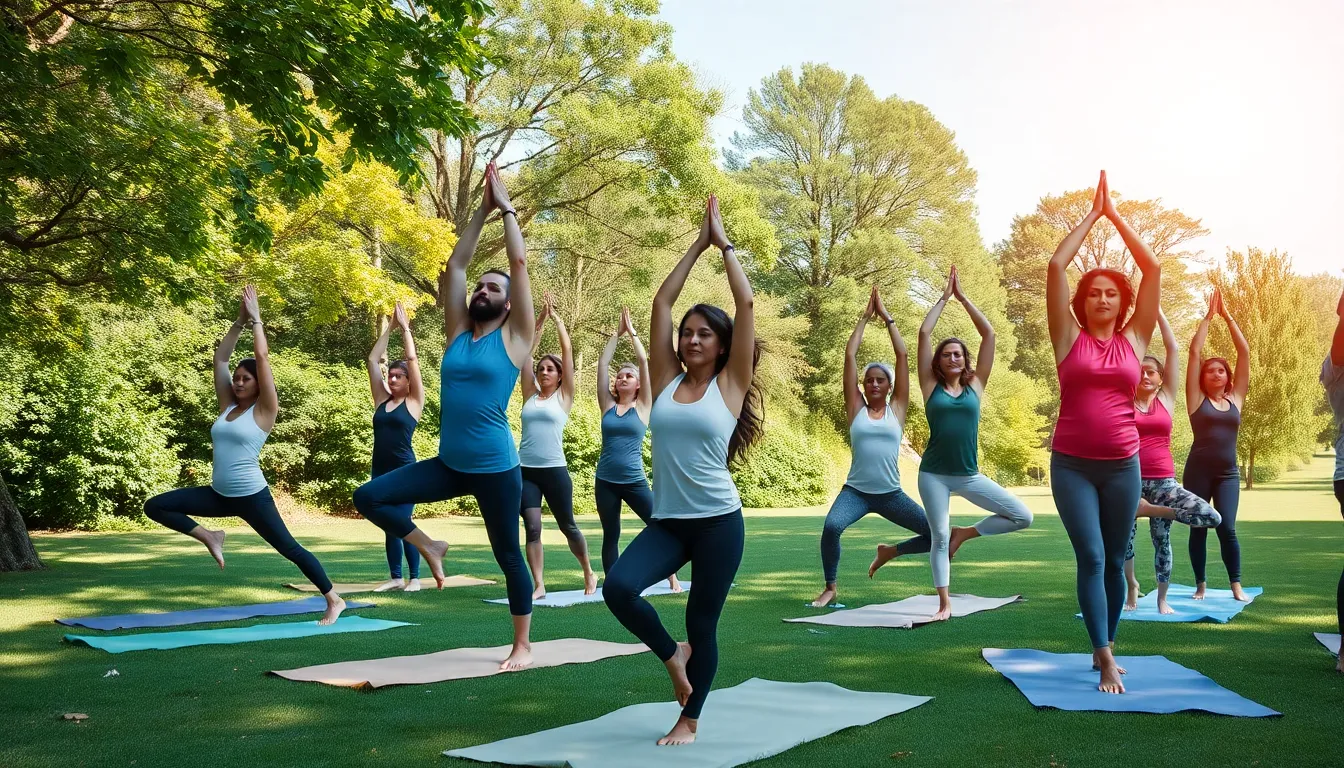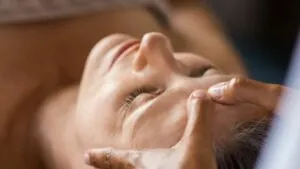Yoga isn’t just for pretzel-like contortionists or those who can balance on one toe while sipping green tea. It’s a journey anyone can embark on, and it’s packed with benefits that go beyond just mastering the downward dog. Whether you’re looking to unwind after a long day or simply want to improve your flexibility (and maybe impress your friends at the next party), yoga offers a fantastic way to connect mind and body.
Table of Contents
ToggleWhat Is Yoga?
Yoga encompasses a variety of practices aimed at fostering physical, mental, and spiritual well-being. This ancient discipline, originating in India, incorporates postures, breathing techniques, and meditation. Participants engage in different styles of yoga, each offering unique benefits. Hatha yoga focuses on basic postures, while Vinyasa emphasizes breath-synchronized movement.
Practicing yoga enhances flexibility and strength. Increased mobility comes as a result of regular stretching and mindful movement. Moreover, it promotes relaxation, helping to reduce stress and anxiety levels. The meditative aspect of yoga cultivates mental clarity and emotional balance.
Safety remains paramount in yoga practices. Beginners should prioritize proper alignment over complexity. Utilizing props like blocks or straps can facilitate comfort and stability, making poses accessible. Instruction from a certified teacher aids in mastering foundational techniques and ensuring injury prevention.
Yoga serves as a holistic approach to health. Scientific studies support claims that it positively influences cardiovascular health, muscle tone, and immune function. Consequently, many individuals incorporate yoga into their daily routines to enhance overall well-being.
Diverse communities around the world embrace yoga, making it widely accessible. Various resources, including online classes and local studios, provide opportunities for newcomers to explore this enriching practice. In summary, yoga offers a path for everyone, fostering connection between body and mind, regardless of one’s physical capabilities.
Benefits of Yoga for Beginners


Yoga offers numerous benefits for beginners, promoting physical and mental well-being.
Physical Health Improvements
Improved flexibility occurs through regular practice, allowing muscles and joints to stretch and strengthen. Enhanced muscle tone develops as various poses target different muscle groups, promoting a balanced physique. Cardiovascular health sees positive effects, as yoga encourages better circulation and heart function. Additionally, posture improves, reducing strain on the spine and associated discomfort. Incorporating breathing techniques leads to increased lung capacity and stamina during physical activities. Engaging in yoga has also shown to aid digestion and boost the immune system, allowing the body to function optimally.
Mental Health Benefits
Mental clarity and focus enhance as yoga practice encourages mindfulness and present moment awareness. Stress reduction is significant, with breathing exercises and relaxation techniques alleviating tension. Increased emotional balance promotes resilience against life’s challenges, nurturing a greater sense of well-being. Anxiety levels decrease for many practitioners, providing a calming effect through meditative practices. Greater self-awareness develops as students connect with their thoughts and feelings, fostering personal growth. As individuals progress, they often experience an overall sense of inner peace and contentment, positively influencing daily life.
Getting Started with Yoga for Beginners
Getting started with yoga involves understanding its various aspects. Beginners can find the right entry point by exploring different yoga styles, essential equipment, and props.
Choosing the Right Style of Yoga
Selecting a yoga style tailored to individual needs is crucial. Hatha yoga offers a gentle introduction, focusing on basic postures and breathing techniques. Vinyasa yoga, known for its dynamic flow, links breath with movement, which often appeals to those seeking a more energetic practice. Restorative yoga provides deep relaxation, perfect for stress relief and recovery. Research shows that consistency in practice leads to enhanced physical and mental well-being. Identifying personal goals and preferences ensures a fulfilling journey in yoga.
Essential Equipment and Props
Investing in basic equipment enhances the yoga experience significantly. A quality yoga mat provides cushioning and grip, promoting stability during practices. Blocks offer support for achieving proper alignment, while straps assist in extending reach during stretches. Blankets supply comfort for seated poses and savasana. Additionally, bolsters encourage relaxation and support in restorative poses. Utilizing these props ensures a safer, more effective practice, especially for beginners. Learning to use equipment effectively can transform flexibility and comfort levels, making the journey enjoyable and accessible.
Basic Yoga Poses for Beginners
Beginners can benefit from a range of foundational yoga poses, developing strength and flexibility. Incorporating these poses into practice can enhance physical and mental well-being.
Standing Poses
Standing poses build strength while improving balance and stability. Mountain pose, for example, involves standing tall with feet together and arms at the sides. This pose helps with posture and grounding. Warrior I and II strengthen the legs and open the hips; these poses also foster focus and determination. Tree pose balances the body on one leg, enhancing concentration and stability. Regular practice of standing poses allows beginners to cultivate a strong foundation for their yoga journey.
Seated Poses
Seated poses promote flexibility and calmness, essential for beginners. Sukhasana, or easy pose, involves sitting cross-legged, which encourages relaxation and mindfulness. Forward bends like Paschimottanasana stretch the hamstrings and back, enhancing overall flexibility. Another beneficial seated pose is Bound Angle Pose which opens the hips and stretches the groin. Seated twists such as Ardha Matsyendrasana improve digestion and spinal mobility. Practicing seated poses nurtures a sense of inner peace while encouraging deeper connections to breath.
Tips for a Successful Yoga Practice
Maintaining a successful yoga practice involves setting realistic goals and creating a consistent routine. These strategies ensure growth and enjoyment throughout the journey.
Setting Realistic Goals
Setting realistic goals helps beginners maintain motivation and prevent frustration. Start with achievable objectives, such as practicing yoga twice a week. Gradually increase frequency and intensity based on personal comfort. Focus on specific outcomes, like mastering foundational poses or improving flexibility. Celebrating small achievements along the way reinforces progress, making each practice more rewarding. Additionally, understanding that yoga is a lifelong journey, rather than a quick fix, fosters patience and resilience.
Creating a Consistent Routine
Creating a consistent routine supports the development of a steady practice. Identify a specific time each day or week dedicated to yoga. Establishing this habit enhances mental and physical benefits over time. Consider factors like personal energy levels and lifestyle commitments when selecting practice times. Incorporating variations in styles or class approaches can keep the routine engaging. Integrating yoga into daily schedules cultivates discipline and encourages long-term commitment. Prioritizing time for practice ultimately leads to a deeper connection with the body and mind.





